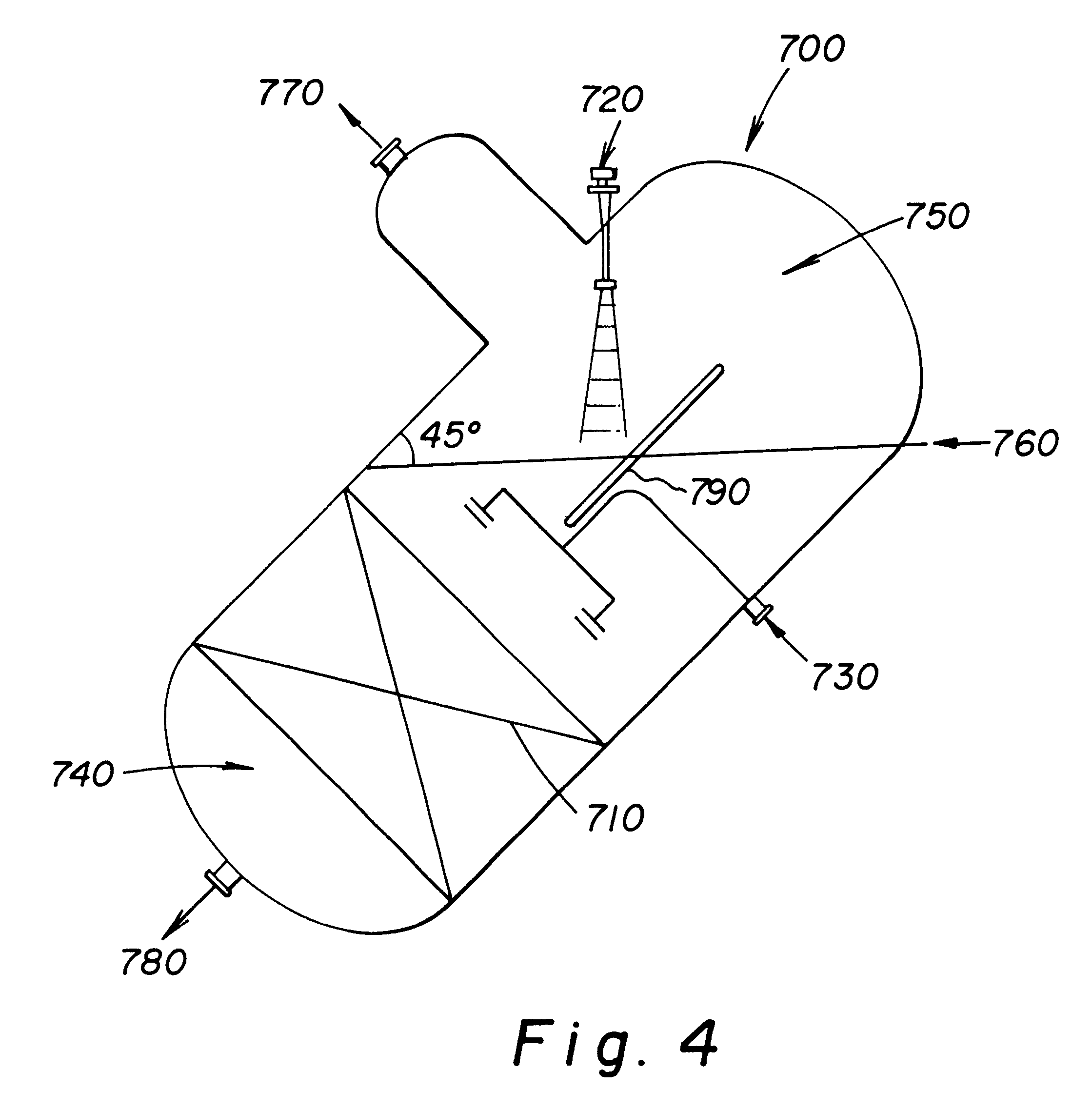Process for resin phase separation by plate decantation
a resin phase and decanting technology, applied in the field of polycarbonate preparation processes, can solve the problems of time-consuming and expensive installation and operation of phase separation and purification processes employing centrifuges, and the separation of two phases is much slower and less efficient, and achieves efficient and effective separation
- Summary
- Abstract
- Description
- Claims
- Application Information
AI Technical Summary
Benefits of technology
Problems solved by technology
Method used
Image
Examples
example 1
A plate decanter was tested on a polycarbonate resin separation line consisting of three centrifuges. A primary centrifuge was used for resin and brine separation. A second centrifuge was used for acid washing the resin solution to reduce the chloride concentration in the third centrifuge to avoid excessive corrosion in the third centrifuge.
In order to test the use of a plate decanter, a 200 liter decanter unit from Esmitec / FIB was tested on the discharge of a feed pump of the resin separation line. The separated light and heavy organic phases from the top and bottom of the decanter were fed back to the input of the centrifuge feed pump.
The gravity decanter consisted of a pipe of 2.6 meter length and a diameter of 300 mm. The decanter was filled with 11 plates, as supplied by Estimtec / FIB. The distance between the plates was 26 mm. The feed entered the unit from the top. To prevent backwashing from the light water phase by the feed, flow collection trays were installed in the top se...
example 2
A reaction mixture containing polycarbonate can be prepared using an interfacial reaction process. Such a reaction mixture may be separated and purified using two plate decanters and three centrifuges in accordance with the process shown in FIG. 1. A calculation using mass balance assuming an input stream composition, brine carry-over and polycarbonate content in accordance with Example 1 was performed.
The results are summarized in Table 1 where PC=polycarbonate, MeCl.sub.2 =methylene chloride, BPA=bisphenol A and TEA is triethylamine. Final outflow of the purified organic phase consisted of 0.5 weight percent water carryover.
example 3
An alternate separation network including two plate decanters in series in continuation with two sets of three centrifuges in parallel is shown in FIG. 3 Effluent 300 from a plant reactor preparing polycarbonate using a two phase interfacial process is introduced into a plate decanter 310 which separates the effluent into a lighter brine phrase 320 and a heavier organic phase 340. The lighter brine phase is discarded. The heavier organic phase 340 is introduced into a second decanter 360. The second lighter phase 380 is removed from the second decanter 360 and recycled back into the effluent 300. The second heavier organic phase 400 is split. A portion of the second organic phase 400 is received by centrifuge A 410 and the reminder is received by centrifuge A1420. The lighter aqueous phases 440 and 460 are removed from centrifuge A and A1, respectively and recycled for the water content. The heavier organic phases 480 and 500 are removed from centrifuge A and A1, mixed with water 51...
PUM
| Property | Measurement | Unit |
|---|---|---|
| weight percent | aaaaa | aaaaa |
| angle | aaaaa | aaaaa |
| angle | aaaaa | aaaaa |
Abstract
Description
Claims
Application Information
 Login to View More
Login to View More - R&D
- Intellectual Property
- Life Sciences
- Materials
- Tech Scout
- Unparalleled Data Quality
- Higher Quality Content
- 60% Fewer Hallucinations
Browse by: Latest US Patents, China's latest patents, Technical Efficacy Thesaurus, Application Domain, Technology Topic, Popular Technical Reports.
© 2025 PatSnap. All rights reserved.Legal|Privacy policy|Modern Slavery Act Transparency Statement|Sitemap|About US| Contact US: help@patsnap.com



